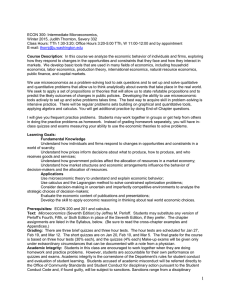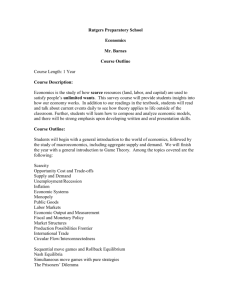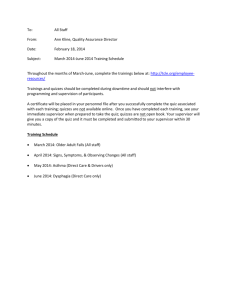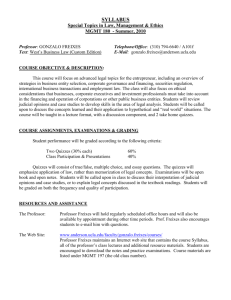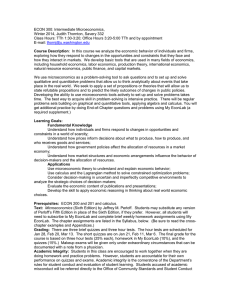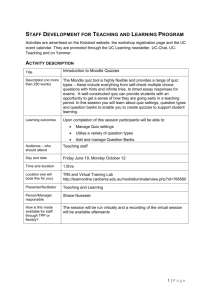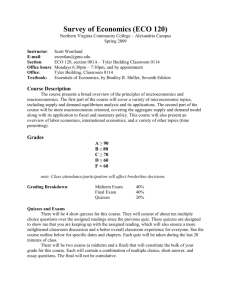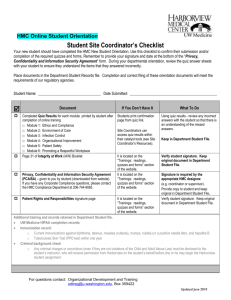BMA 5124 – Environmental and Resource Management in a
advertisement
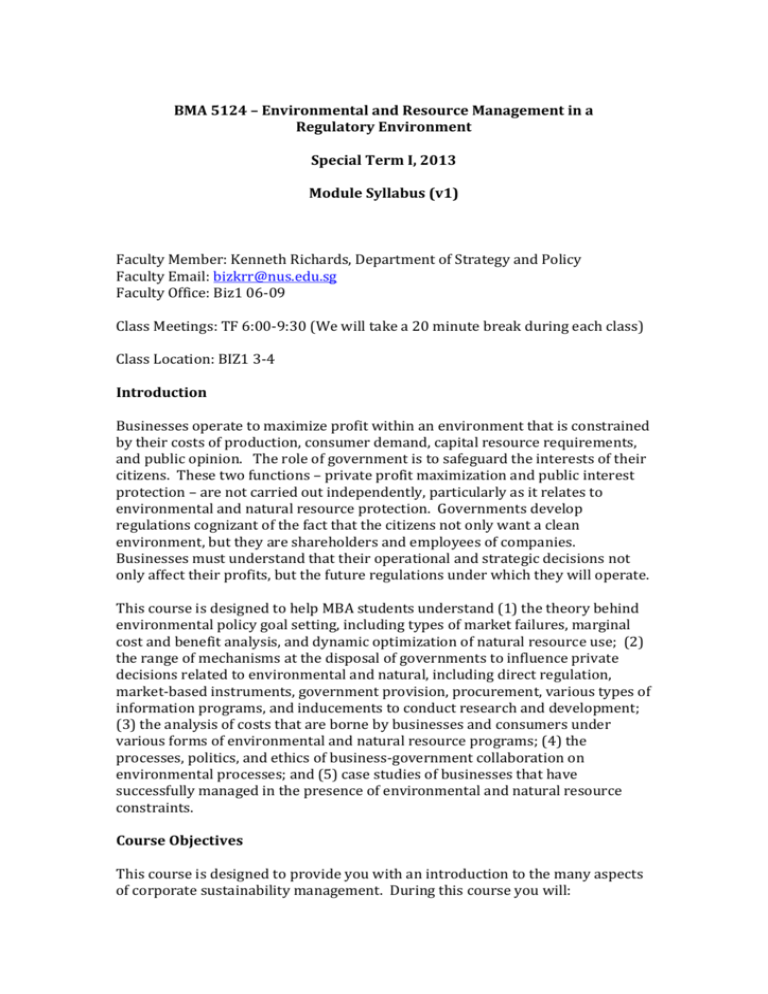
BMA 5124 – Environmental and Resource Management in a Regulatory Environment Special Term I, 2013 Module Syllabus (v1) Faculty Member: Kenneth Richards, Department of Strategy and Policy Faculty Email: bizkrr@nus.edu.sg Faculty Office: Biz1 06-09 Class Meetings: TF 6:00-9:30 (We will take a 20 minute break during each class) Class Location: BIZ1 3-4 Introduction Businesses operate to maximize profit within an environment that is constrained by their costs of production, consumer demand, capital resource requirements, and public opinion. The role of government is to safeguard the interests of their citizens. These two functions – private profit maximization and public interest protection – are not carried out independently, particularly as it relates to environmental and natural resource protection. Governments develop regulations cognizant of the fact that the citizens not only want a clean environment, but they are shareholders and employees of companies. Businesses must understand that their operational and strategic decisions not only affect their profits, but the future regulations under which they will operate. This course is designed to help MBA students understand (1) the theory behind environmental policy goal setting, including types of market failures, marginal cost and benefit analysis, and dynamic optimization of natural resource use; (2) the range of mechanisms at the disposal of governments to influence private decisions related to environmental and natural, including direct regulation, market-based instruments, government provision, procurement, various types of information programs, and inducements to conduct research and development; (3) the analysis of costs that are borne by businesses and consumers under various forms of environmental and natural resource programs; (4) the processes, politics, and ethics of business-government collaboration on environmental processes; and (5) case studies of businesses that have successfully managed in the presence of environmental and natural resource constraints. Course Objectives This course is designed to provide you with an introduction to the many aspects of corporate sustainability management. During this course you will: Become familiar with the concepts and vocabulary in the field; Be introduced to the analytical tools, particularly microeconomic tools, associated with analysis of government regulation for environmental and natural resource protection; Explore environmental and natural resource policy and its effect on firms; Work through cases and examples of businesses managing under environmental and natural resource regulation; Gain teamwork experience addressing practical challenges in regulatory analysis and management; Learn how to analyze the impacts and positively influence the direction of government regulations. Course Materials The course will include required readings, optional readings, and case studies. Students will be provided with a reading list prior to the beginning of the module. Course Evaluations Grades for the course will be based upon the following assignments and contributions: Problem sets: Quizzes: Group projects: Class participation: 20% 30% 30% 20% Problem sets: There will be two numerical problem sets during the course. These will draw on basic microeconomic principles to understand the process and impact of government regulations. Quizzes: There will be three in-class quizzes of no more than 30 minutes. The quizzes will be cumulative, requiring you to integrate all material covered to that point. The quiz might take any form, including essay, multiple choice, short answer, or other formats as appropriate. Group projects: There will be one group project, with presentations during the final week of class meetings. Your grade for the project will be based on a combination of evaluations on the group paper, the participation, and possibly peer evaluations. Class participation: All students are expected to attend all class meetings prepared to discuss the assignments and readings. You will be evaluated on your attendance, contributions to the class discussion, and insight. Schedule of Meetings Section I: Introduction to Public Economics and Environmental Policy 2 14 May 2013 Refresher on basic concepts in economics Brief review of welfare economics Introduction to environmental policy 17 May 2013 Market failures and the role of the government Government failure and the limits of regulation Section II: Addressing Market Failure 21 May 2013 Environmental and natural resource goal setting through marginal analysis Public goods analysis 25 May 2013 Property rights, Pigou and Coase Regulation Problem Set 1 is due Quiz#1 29 May 2013 Emissions, marketable allowances, and subsidies Regulation under uncertainty 29 May 2013 Regulatory enforcement Addressing information related market failures: imperfect information, asymmetries of information, and research and development 4 June 2013 A framework for policy instruments Problem Set 2 is due Quiz #2 7 June 2013 Politics in environmental and natural resource regulation 11 June 2013 Influencing government regulation 14 June 2013 Applications and cases in management under environmental regulation 18 June 2013 Group presentations/discussion 21 June 2013 3 Group presentations/discussion Quiz #3 4

